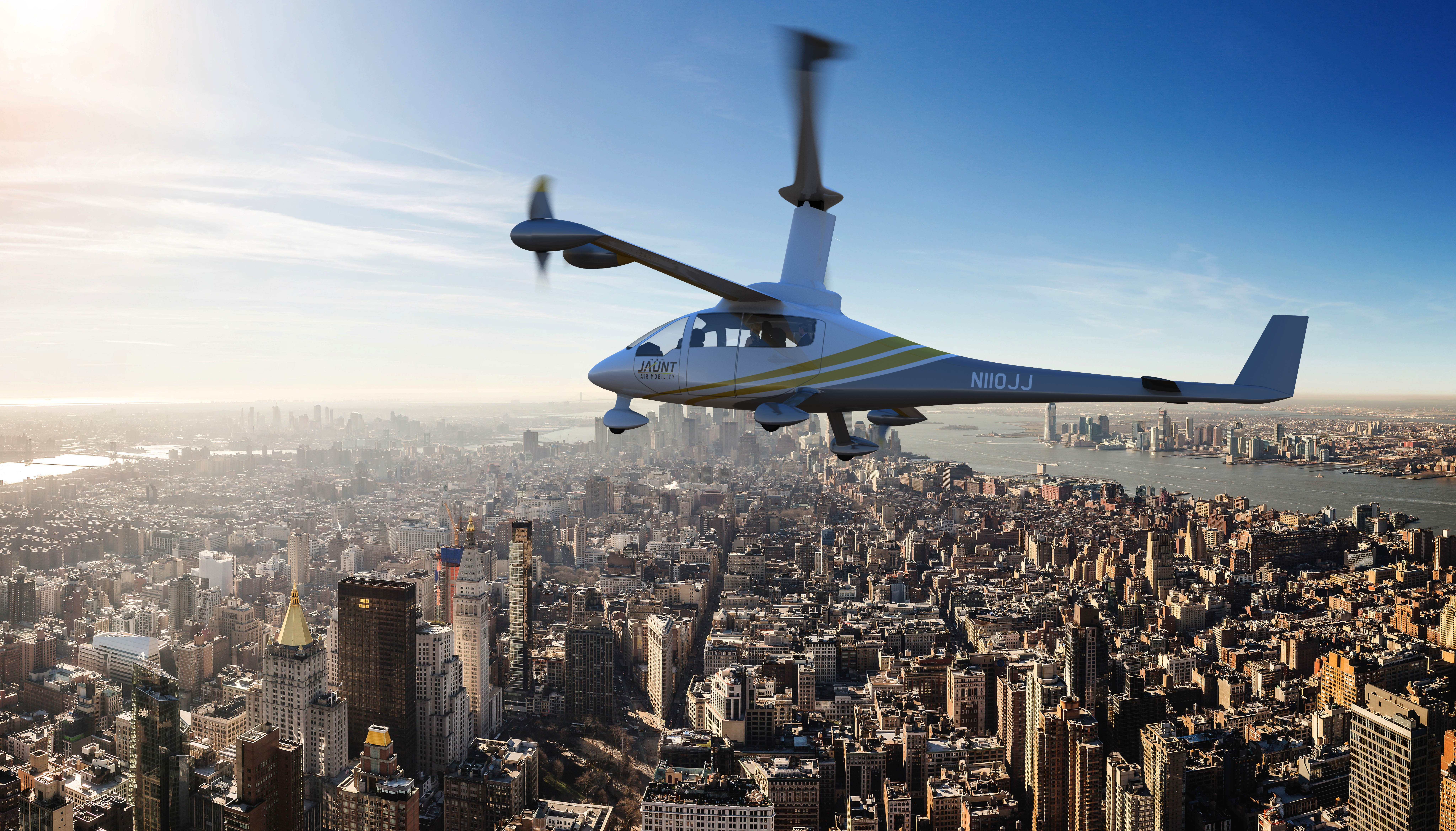Click Here to View This Page on Production Frontend
Click Here to Export Node Content
Click Here to View Printer-Friendly Version (Raw Backend)
Note: front-end display has links to styled print versions.
Content Node ID: 419480
Fixed-wing aircraft have long been the most efficient design for cruise flight, while the single rotor configuration has, to date, been the tried-and-tested method for vertical flight. Put them together and what results, says Jaunt Air Mobility, is its Journey eVTOL, an all-electric piloted aircraft capable of carrying up to four passengers 80 to 120 miles with an estimated top speed of 175 mph.
“The Jaunt Journey offers the best of both worlds, resulting in an eVTOL that takes off and lands like a conventional helicopter but flies as efficiently as an airplane,” Simon Briceno, Jaunt’s chief commercial officer, told the Vertical Flight Society’s recent Transformative Vertical Flight conference in San Jose, California.
Although this hybrid configuration is markedly different from other eVTOL designs, according to Briceno, what really makes the aircraft stand out is its state-of-the-art technology, including the company’s patented slow rotor compound (SRC). Once the Journey switches from vertical lift to cruise, the SRC dramatically reduces the speed of the main rotor—down to about 100 rpm. In doing so, it reduces both drag and associated vibration.
“This unloads the weight of the aircraft away from the rotor and puts it on the wings, effectively making the eVTOL an airplane ready for cruise,” Briceno explained.
The SRC also has an important safety aspect. In the unlikely event of a total loss of propulsion, the aircraft can perform a safe, controlled landing via autorotating and, thanks to its fixed wings, gliding. According to Briceno, from an altitude of 1,000 feet, this gives the pilot over five square miles of landing area to work with.
In addition to the SRC, Jaunt has partnered with several leading aerospace companies and universities to advance other critical technologies. For example, together with Penn State University and Continuum Dynamics, Inc. (CDI), the company is working to reduce the noise of its airframe. “Thanks to the unique design of the main rotor, along with the aircraft’s low tip speed and disc load, the Jaunt Journey has a very low acoustic footprint,” said Briceno.
Working with Qarbon Aerospace and Georgia Tech, Jaunt is evaluating the benefits of incorporating thermoplastics into its aircraft. “Although our tests showed structural and operational benefits, we’ve found that the biggest value in thermoplastics is on the production side,” noted Briceno.
When used in combination with such advanced manufacturing techniques as robotic automation, induction welding, and 3D printing, thermoplastics can lead to a massive reduction in assembly time, capital expenses, and production costs. As a result, Jaunt has opted to use it as the primary material for the Journey’s structure, a decision that Briceno said will be key for scaling up production.
Jaunt is also working on an extremely fast charging solution with BAE Systems and New York's Binghamton University. “We gave them our specifications, mission profile, and operational and power requirements,” said Briceno. “They came back with a design that has over twice the specific power of what’s currently available in commercial chargers.”
BAE Systems is also helping to develop the Journey’s battery pack, which Briceno said has gone through significant cycle cell testing.
Thanks to a partnership with CAE, Jaunt is able to leverage the company’s modeling and engineering simulation capabilities, along with the innovative hardware and technologies it brings to the table. “CAE’s extensive experience has already proved essential in designing the Journey’s cockpit,” Briceno explained. “As we look towards certification, being able to conduct a substantial part of our flight testing on the ground will allow us to meet our milestones faster.”
Of course, the key milestone to meet is entry into service, which is expected to happen by the end of 2026, following the testing of a 2023 preproduction aircraft. “We recognize that there is still a tremendous amount of work to be done, but we’re very excited to continue working with our partners and certainly with the progress we’ve made so far,” Briceno concluded.
The company is in the process of completing a merger with the Airo Group. It also is establishing a development and production site near Montreal.
